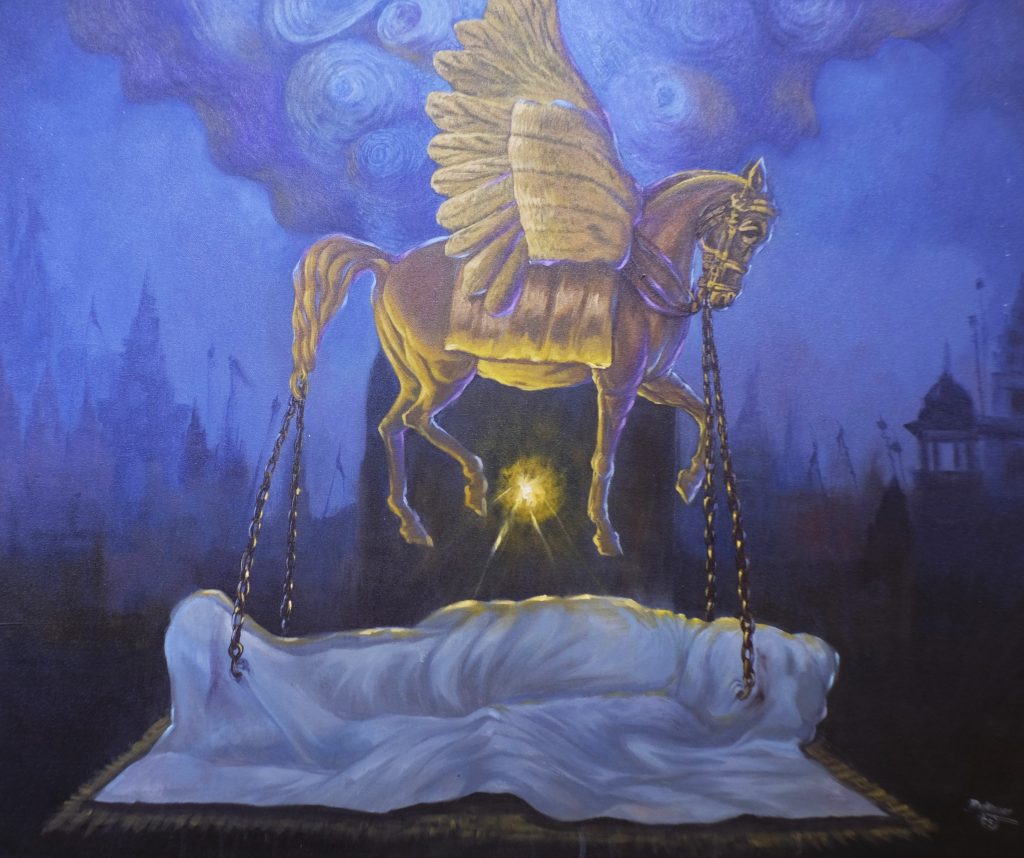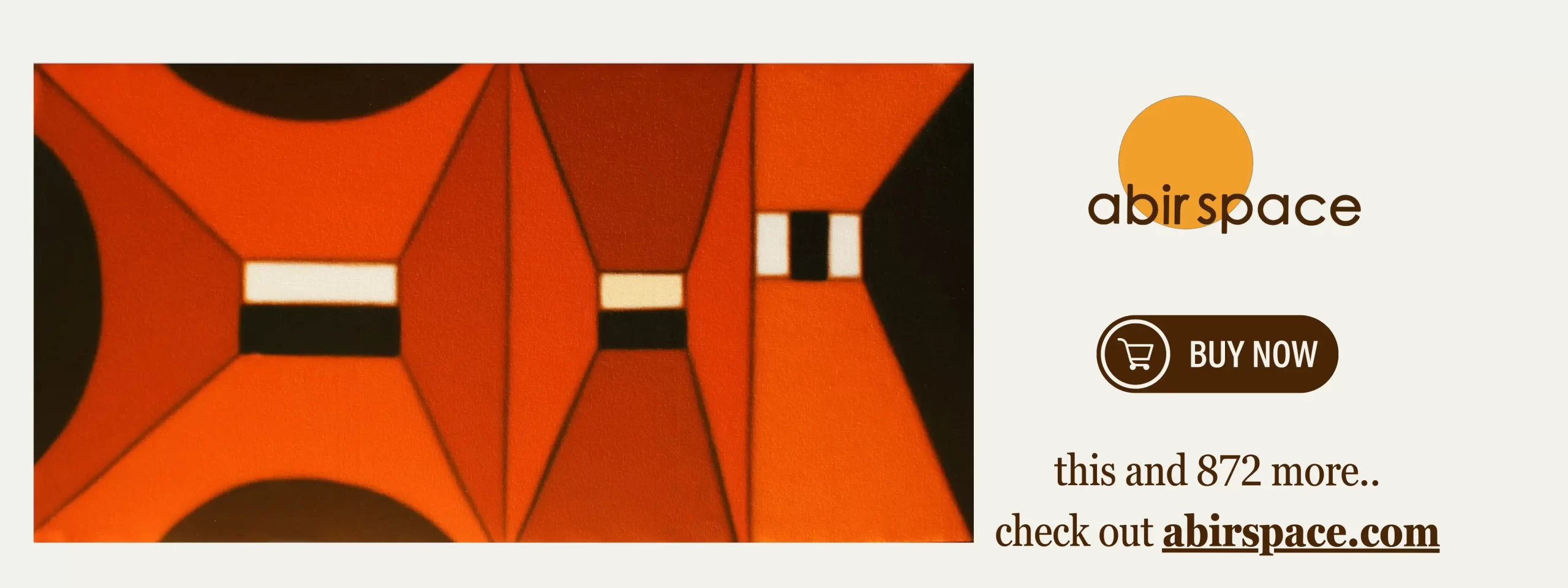“Art offers an opportunity to think about who we are, where we are, and what we want to be.”
– Olafur Eliasson
The exhibition, showcasing the works of Research Scholars from Lalit Kala Akademi, is being held from 4th to 11th November, 2025 at Sankho Choudhuri Art Gallery, Lalit Kala Akademi Regional Centre, Garhi Village, New Delhi. Curated and conceptualized by Gaurav Kumar, who is an art historian and Lalit Kala Akademi scholar whose research explores the evolution of printmaking and mass reproduction in India. His curatorial projects and writings for Art & Deal magazine reflect a deep engagement with visual culture, mythology and modernity in Indian art. The show presents a dialogue between artistic practice and academic research, featuring seven artist–scholars and one art historian whose works reflect diverse approaches to inquiry, material and expression.
An alumnus of Sir JJ School of Art, Mumbai, Deepakk is a multidisciplinary artist whose creative language traverses painting, sculpture, video, and digital media. His practice is rooted in an on-going dialogue between materials and meanings—experimenting with bricks, clay, ash, oil, acrylic, and mixed media to craft evocative visual narratives. Deepakk’s work ‘Rang 1(Colour) and Untitled’, meditates on the intricate relationships between humans, animals, and urban habitats, reflecting on how technology and modern civilization reshape our connection with nature. Inspired by everyday observation, social media, and contemporary news imagery and current events, he constructs compositions that harmonize realism with conceptual nuance, offering viewers a spectrum and layered spaces of interpretations and reflections.
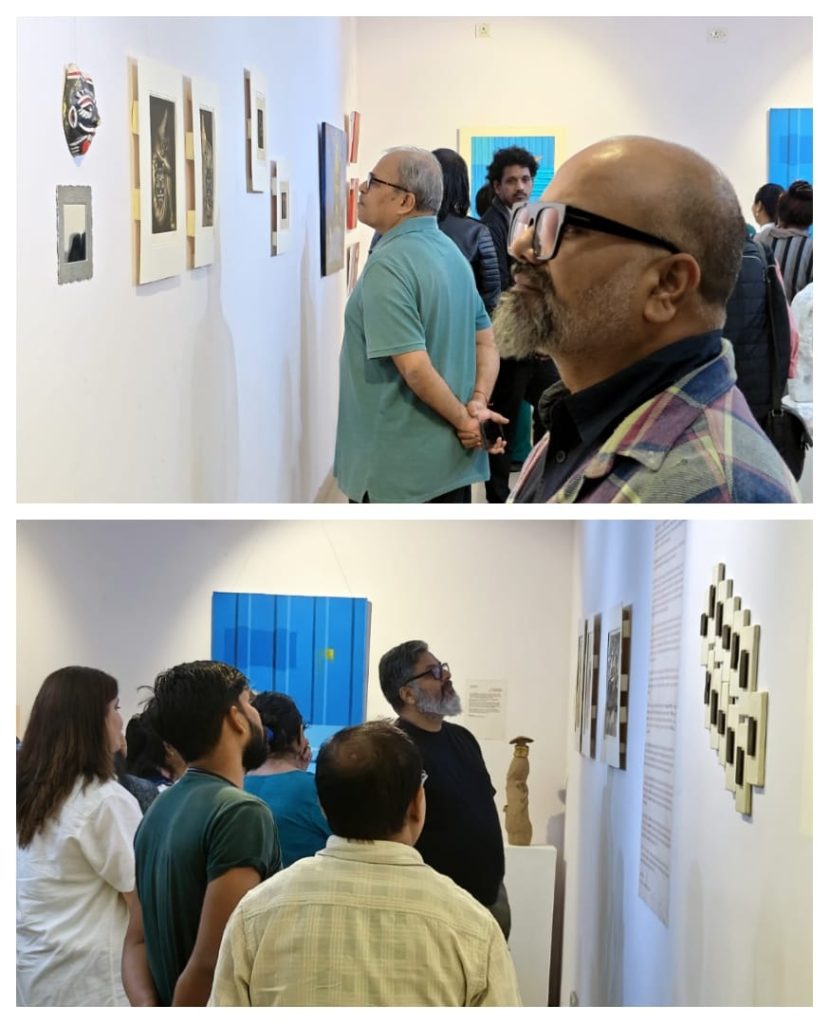
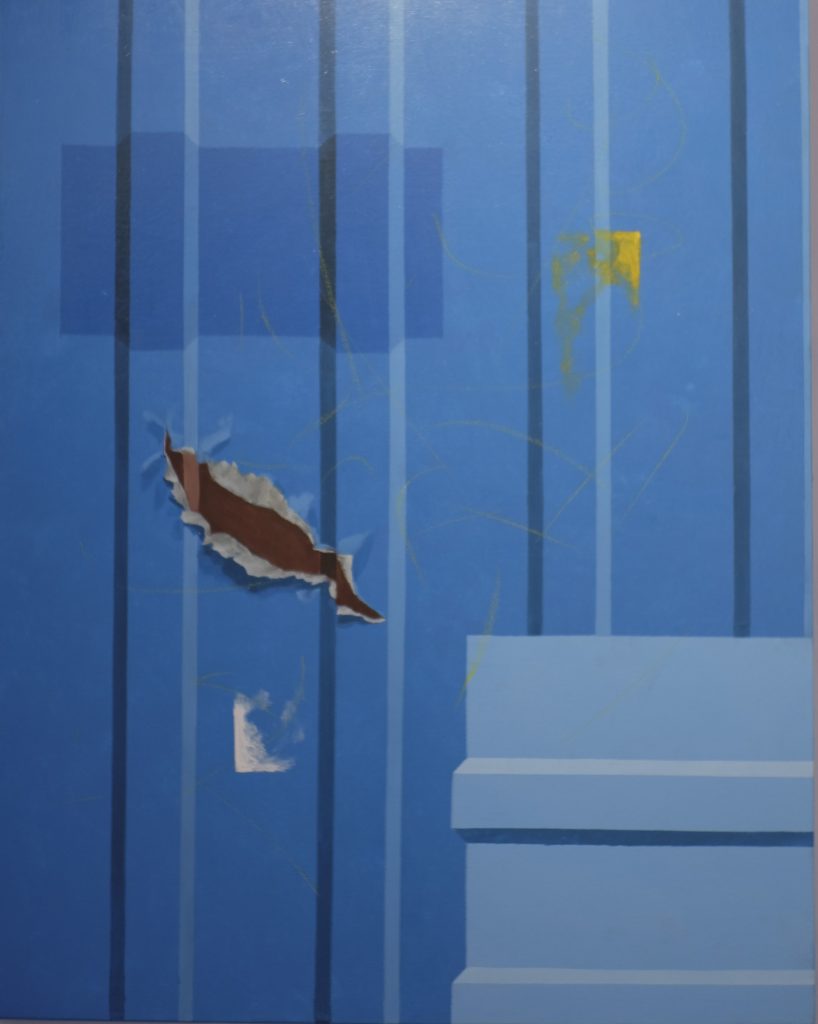
Artwork by Deepakk
Vishal Rawat is a sculptor whose artistic language unfolds through stone, clay, wood, and metal. A postgraduate in Sculpture from the Government College of Art, Chandigarh, and his practice is profoundly informed by his environment and personal experiences. He delves into the dynamics and reveals a poetic engagement with form, cadence, and coils—each sculpture a dialogue between imagination and material, meticulousness and instinct. Moving fluidly between traditional craftsmanship and experimental approaches, he reconnoitres the delicate balance of nature and space, with each conception embodying an incessant dialogue among the shifting ways in which humans perceive and engage with them. Through his creations, Vishal seeks to evoke contemplative encounters—inviting viewers to experience the harmony of form and void, and to sense the quiet transformative power that art can awaken.
Vinay Gusain is a visual artist whose practice fluidly traverses printmaking and video. His compositions often unfold within enclosed, stage-like interiors—spaces that become intimate theatres where reminiscence, concealment, and revelation cohabit. He holds an MVA in Printmaking from the MS University of Baroda. Vinay’s work ‘Geometry of Silence, How to Say No, In Between Worlds, and Unspoken Act’ probes into the emotional and psychological terrains of lives lived on the margins—socially, economically, and inwardly. Drawing from the subtleties of everyday existence, he constructs evocative, meticulously composed worlds that reveal the quiet undercurrents of seclusion, vulnerability, and resilience. Ordinary materials—polythene bags, rubber gloves, and found objects—transform into both refuge and weight, emblematic of the shared fragility and survival that define transient lives. These elements are imbued with symbolic resonance, serving as insignia of strain, pliancy, and ineffable narratives. Working with mezzotint, he conjures a cinematic tension between shadow and illumination. Through these surreal settings, Vinay contemplates the porous boundaries between silence and expression, containment and release.

Artwork by Kumari Nidhi
Kumari Nidhi is a visual artist whose practice unfolds lyrical meditation through the timeless mediums of woodcut, etching, and drypoint. MFA from Indira Kala Sangeet Vishwavidyalaya, Khairagarh, her art draws its pulse from the sacred soil of Prayagraj- Kumbh Nagri—a place where myth and memory, ritual and rhythm, flow together like the confluence of rivers. Steeped in the ethos of her land, Nidhi’s imagery celebrates the pace of community—the faith that endures, the festivals that renew, and the daily labour that blossom into quiet acts of devotion and grace. In her on-going series ‘Shakti Rupa’, Nidhi invokes the divine feminine as seen through Parvati’s nurturing calm, Kali’s fierce protection, and Durga’s transformative might. These mythic energies, reimagined through her visual idiom, merge the cosmic and the earthly—revealing womanhood not as a distant divinity but as a living, breathing power embedded in everyday existence. Her prints thus become sacred spaces of reflection—where the ordinary attains sanctity and the eternal pulse of Shakti resonates through the gestures of work, worship, and life itself.
Bridging the sensibility of a potter with the insight of a printmaker, Yogesh Kumar creates a continuum between craft and contemporary expression. A multidisciplinary artist whose practice unfolds at the confluence of heritage, identity, and social consciousness, he holds a MFA in Printmaking from Kala Bhavana, Visva-Bharati University. Grounded in the legacy of traditional potters, the Kumhars, Yogesh’s work ‘Nazarbattu II, III and Remembrance II’ carries both a personal and collective memory. His art becomes a meditation on the cultural legacy of pottery—its ritual essence, its slow fading presence, and the quiet resilience of those who continue to mould earth into form amid the forces of industrialized transformations. Through etchings, installations, and mixed-media works, Yogesh translates these inherited stories into a visual language rich with tactile depth. Scarred, pressed, and layered textures echo the imprints of labour, memory, and belonging. His practice, examines themes of class, inequality, and cultural erosion. They embody the tactile dialogue between the hand and the earth, between what is lost and what continues to live on.
Engaging traditional processes and contemporary formal language, Sabita Das’s work establishes a dialogue between material heritage and evolving artistic thought. She is a sculptor whose practice studies the expressive potential of terracotta, ceramic, and metal. She is currently pursuing her MFA in Sculpture at the College of Art, New Delhi. Sabita’s on-going ‘Mushroom Series’ mirrors the cyclical nature of life—examining emotion, growth, decay, and renewal as interconnected states of being, employed as a signifier for resilience and regeneration, reflecting how life and compassion endure amidst change. In these forms, fragility becomes fertile ground—where relationships and hope continue to take root and renew themselves. Through her material choices—combining stoneware with red earthenware and integrating metallic elements—Sabita explores the tensions between strength and frailty, permanence and impermanence.
Rajkumar is a visual artist whose practice is informed by the spiritual and philosophical milieu of Kashi. His work ‘Shiva and Kashi and Mayajaal’ investigates how artistic expression in this sacred geography extends beyond aesthetic experience to function as an integral component of ritual, devotion, and collective consciousness. His practice proposes art as both a contemplative and participatory act—one that sustains the evolving dialogue between faith, form, and the lived experience of Kashi’s spiritual landscape. Drawing upon the tenets of Indian philosophical thought, Rajkumar examines the enduring agency of symbols, sacred forms, and ritualistic objects in shaping cultural memory and spiritual awareness. His engagement situates art as a living continuum- as a mode of reflection and the metaphysical significance- an intersection between sacred art and everyday life, considering how temple architecture, visual motifs, and folk practices operate as dynamic expressions of India’s philosophical legacy. Rajkumar holds Bachelor’s and Master’s degrees in Fine Arts from MGKVP University, Varanasi, and has pursued additional training in Interior Architecture at IIT Roorkee and Film Appreciation at IIT Madras.
As articulated by the Curator, “Each artist approaches their discipline through a deeply personal yet socially responsive lens, tracing the threads between tradition and transformation, material and meaning, the seen and the unseen…Open Studio Edition – I stands as a living dialogue between research and making, where each artwork becomes both question and reflection, form and experience, art and life…It was initiated independently by the scholars using their own resources. The idea emerged from a shared belief that the artworks created each month during their scholarship period should not remain limited to the view of the Akademi administration alone, but should also be open to public engagement. They wanted an opportunity to receive genuine feedback and critical responses from a wider audience. With this in mind, the scholars collectively decided to launch the first edition of Open Studio on a self-funded basis. They plan to continue this series throughout the duration of their scholarship, and possibly even beyond, inspiring future LKA scholars to take it forward.”
The opening day was graced by the presence of senior artists such as Dattatraya Apte and Sushanta Guha from Garhi Studios, who warmly commended and supported the spirit of this initiative.
Cover image: Artwork by Rajkumar
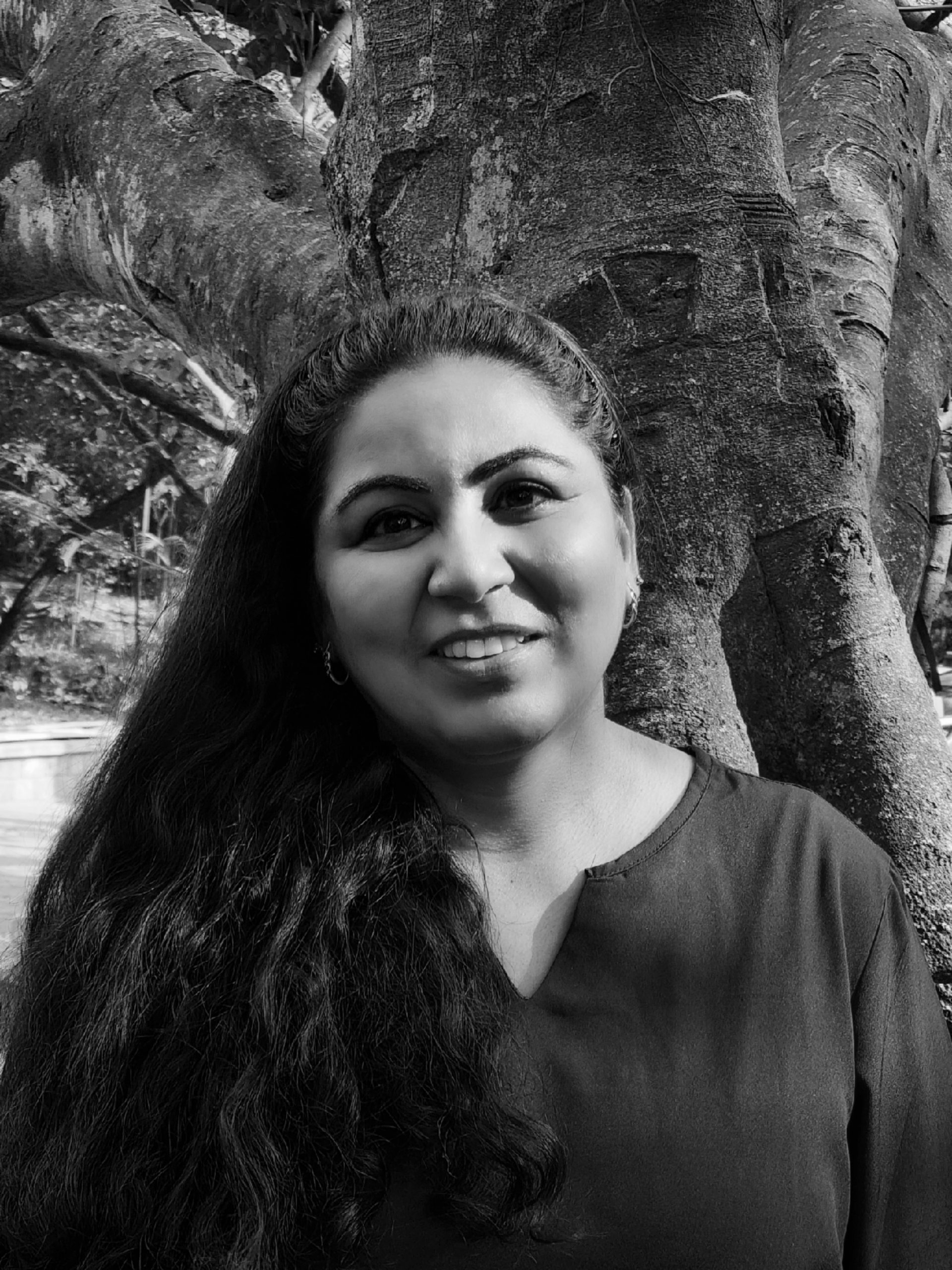
Alka is an artist and art writer with a diverse career spanning teaching, e-learning projects with the Ministry of Human Resource Development (MHRD), and editorial work. An alum of the Government College of Art, Chandigarh (BFA) and Banaras Hindu University, Varanasi (MFA, PhD), she has been recognised with numerous prestigious awards and honours.

